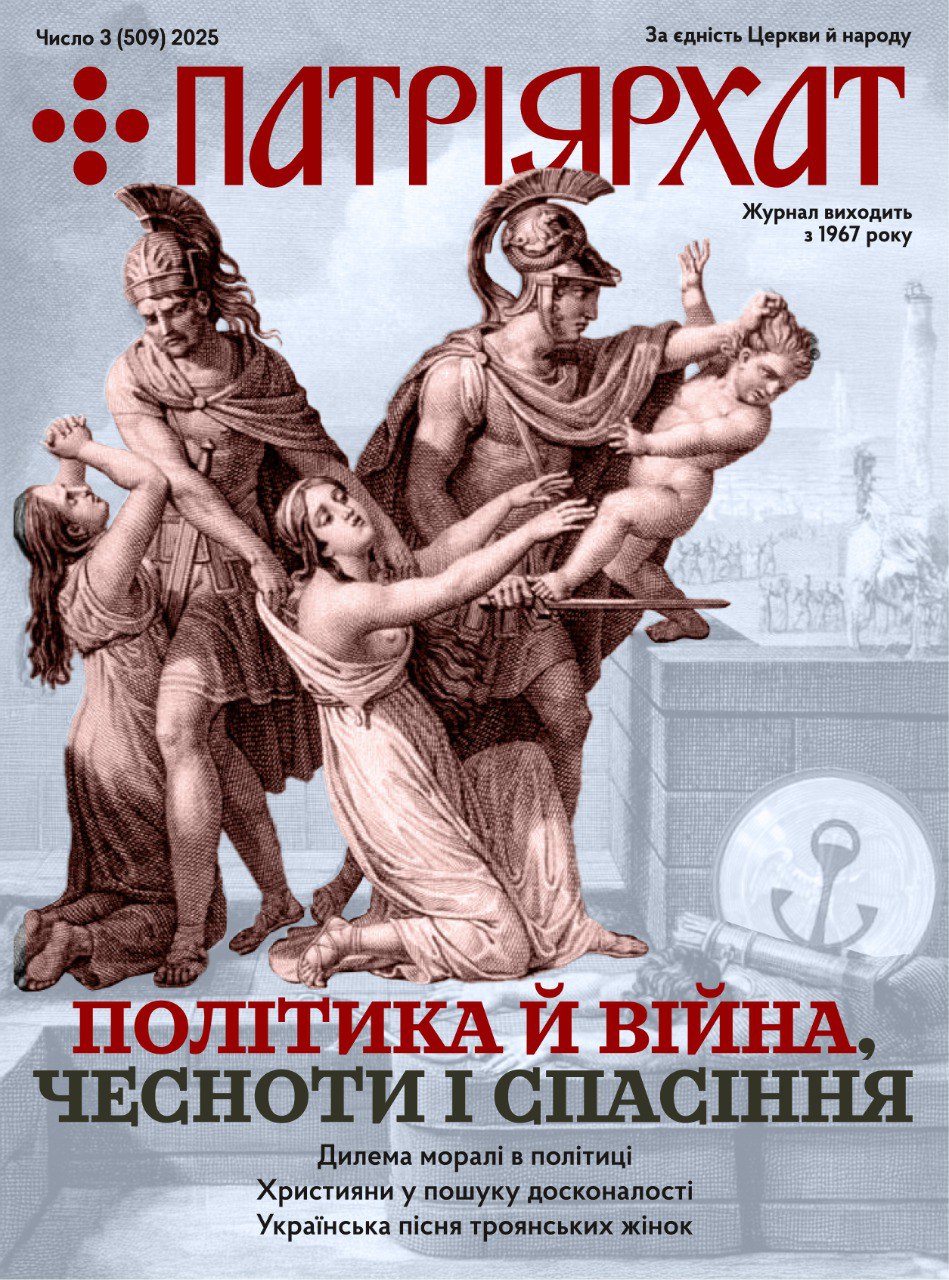The author states that it is obvious that this booklet was meant more for export to Latin Rite dignitaries than for domestic consumption among Ukrainian Catholics. Its circulation among the faithful of the Ukr. Cath. Church remains very limited. Up to the time of this writing many Ukr. priests have not yet received it. Did Bishop Losten fear the reaction of the Ukr. People of God to the pamphlet he sponsored?
In the foreword to the booklet Bishop Losten writes: “The widespread movement among clergy as well as laity in regard to the establishment of a patriarchate for Ukr. Catholics welcomes this study in its endeavors to further that cause and light the way towards its most speedy attainment.” Not so long ago Bishop Losten described the movement for the Patriarchate as “small” and charged in press releases that it was “led by subversive elements.” How can The Quest for an Ukrainian Catholic Patriarchate serve the “most speedy attainment” of it when Bishop Losten finds it necessary to ask: “Is a patriarchate needed by the Ukr. Catholic Church at this time?” If the bishop still does not know the answer to this questions after the head of the Ukr. Cath. Church has twice requested the creation of such a patriarchate by Vatican Council II, after all the Ukr. Cath. bishops requested the Holy Father to raise the status of the Ukr. Cath. Archiepiscopate to that of a patriarchate, then the pamphlet he patronized can by no means be considered a contribution to the cause.
How can this booklet serve the welfare of the Particular Ukr. Cath. Church when Bishop Losten’s contribution encourages the establishment of a “Ukrainian Cath. Church beyond the confines of our Ukrainian homeland in the form of a major archiepiscopate or patriarchate”? His stance, strikingly similar to Moscow’s, would write off the existence of the Ukr. Catholic Church at its seat of origin. Is the bishop abandoning the defense of the rights of the Kiev-Halych Metropolia which are the legal basis of this Church’s autonomy? That is exactly what the Soviet regime desires! That is the line which certain Vatican circles have been following in kowtowing to Moscow since the Fourth Archiepiscopal Synod of Ukr. Cath. Bishops.
Bishop Losten argues that at the moment it is much more important for Ukr. Catholics to concern themselves “with the office of Majorr- Archbishop and its various implications, rather than with the office of patriarch.” There are reasons to fear that the bishop’s suggestion is merely an attempt to lull the Ukr. Cath. community into indifference to the ultimate goal, the establishment of a world-wide patriarchate for the Ukr. Cath. Church. Bishop Losten is one of the bishops whose nomination was so bitterly opposed by Ukr. Catholics in the United States because it was made by the Sacred Congregation for Eastern Churches without consultation, indeed without the knowledge, of Major-Archbishop Joseph SIipyj, the head of the Ukrainian Catholic Church. It could not be clearer that this procedure is in complete violation of the rights reaffirmed by the Decree on Eastern Catholic Churches promulgated by Vatican Council II. As nominee, Msgr. Losten was asked to postpone acceptance until the Synod of Ukrainian Catholic Bishops could act upon his nomination. He ignored the request of Major-Archbishop Joseph. He further confused Ukrainian Catholics by the commentary he wrote on the letter of Pope Paul VI of July 7, 1971, giving a negative answer to the request for the establishment of an Ukrainian Catholic Patriarchate. (Diakonia, VI, 4, 1971.) The sincerity of Bishop Losten’s defense of the rights of the Kiev-Halych Major-Archiepiscopate – the only quasi-patriarchate in the Catholic Church – is yet to be proven.
In one of his segments of the booklet Pospishil quotes John Cardinal Villot’s letter of October 29, 1971, which had a memorandum attached explaining the position of the Roman Curia in reference to the right of the Ukrainian Catholic Bishops to hold a synod. The “Appunto”, as this memorandum was called, denied the bishops the right to hold a canonical synod and invited them, insted, to hold “an assembly of Ukrainian Bishops – already existing and functioning under the name of ‘Conference of the Ukrainian Hierarchs’.” (p.69.) This “Conference” no longer existed. After the arrival of now Major-Archbishop Joseph Slipyj in Rome after his release in 1963 from internment in the labor camps of the Soviet Union, this conference reconstituted itself as a Synod. Pospishil concedes that the “Appunto” has the “character of an obligatory instruction” (p.67.), yet, when the bishops met in synod despite this “obligatory instruction” and the press described their meeting as “defiance” of the will of the Curia, he, in an evident attempt to escape reality, retreated into the field of semantics and termed the press reports a “Myth of Defiance”.
What is defiance? Nothing more or less than an act contrary to a specific directive. In this case, it is clear that a specific directive was given and an act contrary to this directive did occur. The bishops were informed that they lacked permission to hold a synod yet from a statement officially issued by the assemblage on November 1, 1971, the world learned that on the evening of October 31, 1971, the Ukrainian hierarchs commenced their “Synodal sessions” and requested the Holy Father to grant an “Apostolic Blessing for their work”. This announcement was released by none other than His Beatitude Major-Archbishop Joseph Slipyj. It was not information released by the representatives of the Ukrainian patriarchal movement. It was a communique issued by the highest authoritative spokesman of the assembled Ukrainian Catholic bishops. Only its translation was given by the undersigned who, together with other representatives of the patriarchal movement, was in Rome for the dedication ceremonies of the renovated church. It is, therefore, totally unfair to charge that any reporter “uncritically relied on information given to him by repsentatives of the Ukrainian patriarchal movement”, (p.71). A great credibility gap is created by such an inaccurate statement. Such serious lapses in any segment of presentation naturally create doubts as to the accuracy of the rest of the study.
Further reluctance to face the facts of the situation is evident in Pospishil`s statement that “the name itself given to an assembly does not confer any legal character. Only if the Ukrainian bishops would have claimed legislative powers for their enactment independently from a subsequent confirmation by the Roman Curia would their gathering acquire the legal quality of a legislative synod nothing in this nature was attempted by anyone.” (p.71).
The fact is that canon law empowers episcopal synods to function on two levels: electively and legislatively. The monsignor is correct when he notes that the November Synod of the Ukrainian Hierarchy did not enact legislation. What he omits, however, is a matter of historical record which totally undermines his case: namely, that the synod solemnly established an endousma (Permanent) Synod consisting of five members: the Major-Archbishop (ex-officia), the Metropolitans of Winnipeg and Philadelphia, Archbishop Ivan Buchko of Rome, and Bishop Andrew Sapelak of Argentina.
Pospishil’s arguments against the legislative character of the Fifth Archiepiscopal Synod are completely negated by the fact that Major-Archbishop Joseph VII convened the first meeting of the Permanent Synod in July, 1972. The communique which it issued called upon Ukrainian Catholics to “preserve and nourish whatever strengthens the autonomy of our Patricular Church, especially the Synodal decisions” and directed them to “avoid and refute all that threatens this autonomy”. It reported that the bishops studied a draft constitution for the Ukrainian Catholic Church which would be submitted to all the Ukrainian bishops for consideration. This Permanent Synod issued a pastoral letter refuting the false and tendencious presentation by spokesmen for the Soviet Union of the history of the Union of Brest and the pseudo-Synod of Lviv of 1946. By what logic does Pospishil choose to claim that the act which established this Permanent Synod lacks “legal quality of a legislative synod”?

